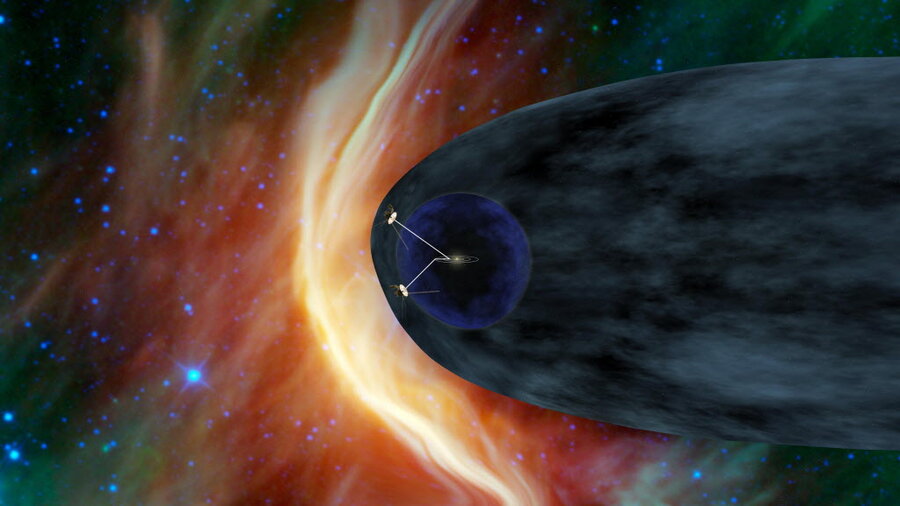Voyager 1 comes closer to leaving the solar system...again
Loading...
No, we aren’t there yet. But we're closer.
Spacecraft Voyager 1 is closer to being the first human-made object to leave the solar system – but what exactly “closer” means is still unknown.
Researchers are waiting for Voyager 1, launched some 35 years ago and now more than 11 billion miles away, to exit the heliosheath, a region that extends past all the planets in our solar system by about 8 billion miles, into interstellar space. But “about” is the critical word here, because the trouble is that scientists don’t know exactly how big that region is.
Still, three papers, published in Science, report that scientists have observed one of the signs that they expect to see as Voyager 1 nears the solar system’s edge: the total disappearance of charged particles, known as termination shock particles, that had been steadily present for seven years.
That means Voyager 1 entered a previously unknown space region called the magnetic highway, or the depletion region, on Aug. 25, 2012, when the disappearance was observed. In that zone, the charged particles travel in and out of the heliosheath along a smooth magnetic field line. Scientists believe that it is the final zone through which the spacecraft must pass before it reaches the heliopause, the exact boundary between the heliosheath and interstellar space.
“We entered an entirely new region on Aug. 25,” Ed Stone, lead project scientist for the Voyager spacecraft told the Monitor. “We think this is the zone that connects to interstellar space.”
Scientists have not yet seen the critical third sign that would mark Voyager 1’s actual passage into interstellar space: a shift in the direction of the magnetic field. The heliosheath's queen is our sun, and the sun’s east-west magnetic field governs the zone. As the space probe exits the solar system, scientists would expect to see a magnetic shift as it enters a regional field with a completely different orientation.
Another sign that Voyager 1 is still in our solar system is that the cosmic rays the craft has begun to detect from interstellar space are traveling unevenly in multiple directions. In interstellar space, scientists expect those rays to be distributed uniformly, Mr. Stone said.
Voyager 1 was launched with its sibling, Voyager 2, in 1977, and both craft have already made tours of Jupiter, Saturn, Uranus, and Neptune before veering toward interstellar space in 1990. Even though it was launched 15 days earlier, Voyager 2 is some 2 billion miles behind Voyager 1.
Voyager 1’s triumphant departure has been heralded before. In December 2004, the Voyager reached what is now known as the termination shock boundary, where particles blown outward from the sun suddenly slow down.
Voyager 1 saw this solar wind hit a dead calm in April 2010, which again suggested that the craft was coming tantalizingly close to the edge of the solar system. That region is now known as the stagnation zone. At that time, the existence of the depletion zone up ahead was unknown.
Scientists aren’t being deliberately cruel by repeatedly announcing that Voyager 1 has departed. The heliosheath is a baffling, mysterious place, and information about its outer reaches is collected only as Voyager 1 continues its unprecedented journey.
So we don't know how long it will be before Voyager 1 leaves for good.
“It could be several more months, or it could also be several more years,” said Stone. “There could be things we still don’t know about out there. Almost every day we’re learning something new.”
“That’s the nature of exploration – you find out how nature really does things,” he said.








